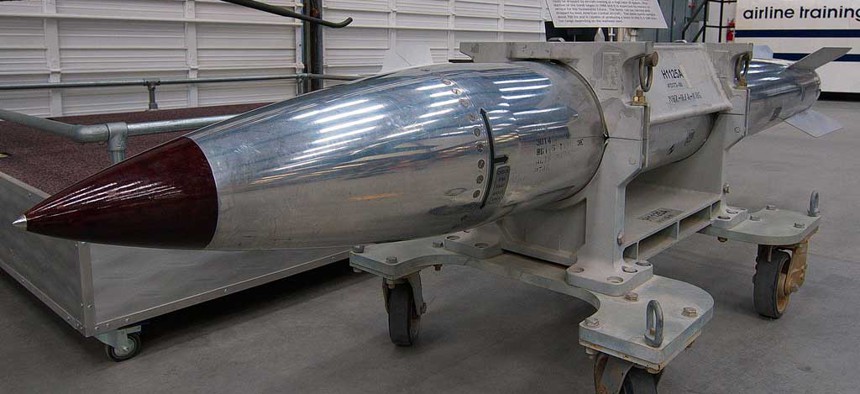
Flickr user Dave Bezaire & Susi Havens-Bezaire
U.S. Conducts 'Successful' Test of an Updated B61 Nuclear Bomb
An early performance analysis of a revamped nuclear gravity bomb was 'successful.' By Diane Barnes
The United States on Tuesday said it "successfully" carried out an early performance analysis of a revamped nuclear gravity bomb.
The "full-system mechanical environment test" was the first in a line of assessments intended to verify how the B-61 bomb's new "Mod 12" variant would behave under routine conditions or accident scenarios, the National Nuclear Security Administration said in a statement. The review included use of an Air Force-developed "tail kit" intended to improve targeting accuracy for the updated bomb, which is to eventually stand in for several earlier versions.
The analysis by the Los Alamos and Sandia national laboratories "is a significant achievement and gives us confidence in our ability to move forward with our efforts to increase the safety and security of the bomb," Don Cook, NNSA deputy administrator for defense programs, said in provided comments.
Engineering preparations for the Mod 12 update are now in their second year. The life-extension project aims to keep B-61 bombs ready for potential use, to service various atomic and non-nuclear parts of the Cold War-era weapons, and to bolster their dependability and security, the NNSA says.
The initial test "provides data for analytical model correlation and validation, insight into component environments and evaluation of developmental hardware," the agency release states. "The mechanical environment test series will assist in qualifying the final B-61‐12 design against the full suite of environments."
Deployment of the Mod 12 weapon would enable the United States to mothball the larger and more powerful B-83 bomb "in the mid-to-late 2020s," the NNSA statement adds.



